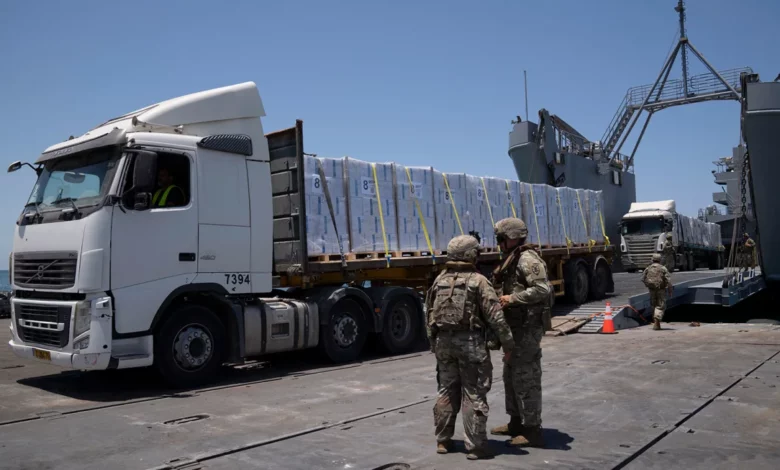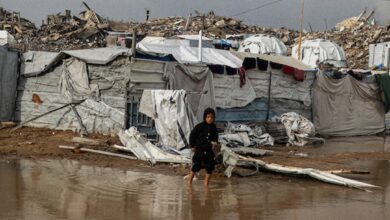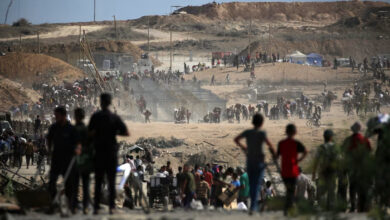
The Pentagon and USAID Inspectors General have launched coordinated reviews of the US humanitarian mission to Gaza where the military’s temporary pier has faced repeated challenges, including breaking apart and the distribution of aid being paused by the UN due to security concerns on the ground.
The Defense Department IG will look specifically at the “effectiveness of DoD’s efforts to facilitate the delivery of humanitarian aid to Gaza through the maritime corridor,” a press release on Thursday, announcing the effort, said. The USAID IG will look at the agency’s “plans and controls” over the distribution of aid from the pier, and particularly the handoff of aid from the pier to the World Food Programme.
The pier — called the Joint Logistics Over The Shore, or JLOTS — was first established on the Gaza coast in May. It has had to be re-anchored twice: once after it broke apart in heavy seas, a week after it was anchored for the first time, and again when it was disconnected intentionally in anticipation of more heavy seas.
The review comes as some congressional Republicans have railed against the troubled pier as a “waste of taxpayer dollars” that “defies all logic.”
On Wednesday, Rep. Mike Rogers, chair of the House Armed Services Committee, sent a letter to senior administration officials in which he said “the operation has been riddled with setbacks, sidelined more often than operational, and can only be classified as a gross waste of taxpayer dollars.” Earlier this month, Sen. Roger Wicker, ranking member of the Senate Armed Services Committee was even more blunt. “This needs to end immediately,” he said in a statement.
WFP has had their distribution of aid from the pier paused for more than two weeks as they assess the security situation on the ground. CNN reported this week that there are more than 6,000 pallets of aid that have been delivered across the pier to the shore, awaiting distribution.
Meanwhile, the humanitarian situation in Gaza has only grown more dire as the war between Israel and Hamas continues. A report this week from the Integrated Food Security Phase Classification (IPC) warned that the situation in Gaza “remains catastrophic” and that there is a “high and sustained risk of famine.”
“The last few months have demonstrated that food and humanitarian access and malnutrition prevalence can change very quickly, the risk of epidemics is increasing and eight months of extreme pressure on the lives of the population make them much more vulnerable to collapse into famine,” the report said.
US officials have said repeatedly that the pier is a temporary measure to get more aid to the desperate population of Gaza, and is not meant to replace land crossings which are critical to flow aid in.
“The agreements between the DoD and USAID establish roles and responsibilities that help enable U.S. humanitarian assistance to reach Gaza through the maritime corridor,” DoD Inspector General Robert P. Storch said in Thursday’s release. “Given this, the DoD OIG and USAID OIG are working together to address the challenges associated with this mission. Through our collaboration, we will leverage the unique expertise, resources, and capabilities of our teams to optimize our oversight in this important area.”
USAID Inspector General Paul K. Martin said in the release that Congress “and the American people can rely on USAID OIG to conduct independent and aggressive oversight of USAID-funded humanitarian assistance programming in Gaza.”
“This initial review, in coordination with DoD OIG, will provide timely insight and transparency over the delivery of assistance via the maritime corridor,” he said.




